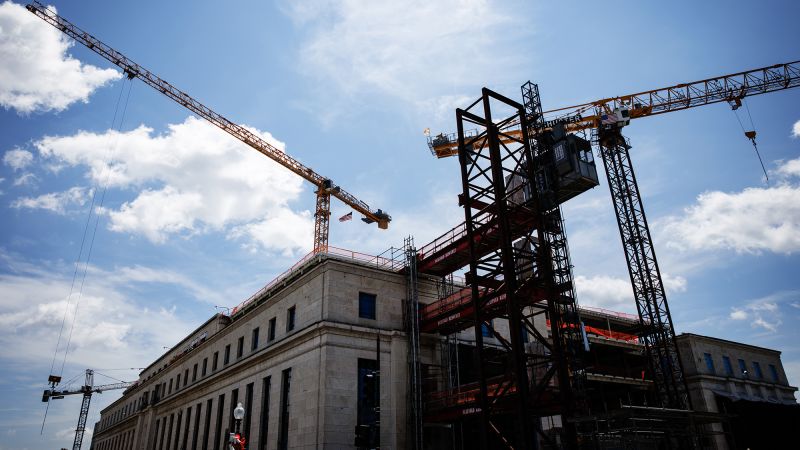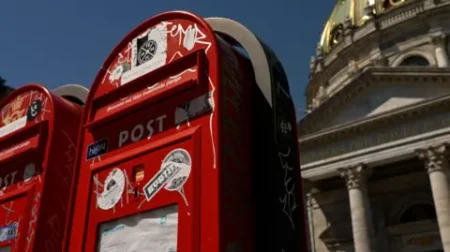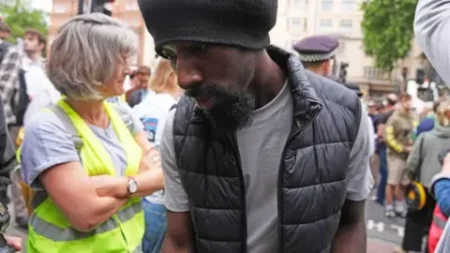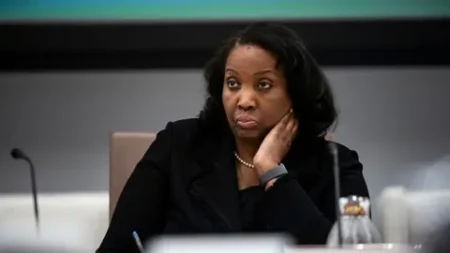In the realm of U.S. governance and media, the fragile interplay between the executive branch and economic institutions like the Federal Reserve is often the subject of intense scrutiny. One of the most noteworthy instances of this dynamic recently emerged as the Federal Reserve faces an unprecedented public relations dilemma, particularly in the context of its ongoing construction project. This situation has surfaced amid criticisms from President Donald Trump, who is notably preoccupied with the performance of the Fed’s Chair, Jerome Powell, a figure Trump personally appointed.
Under the pressure of rising capital costs and a politically charged atmosphere, the Federal Reserve is navigating a challenging landscape. Early reports indicate that Trump has aggressively targeted Powell, particularly due to the Fed’s decision not to lower interest rates. Observers believe that this rhetoric is not just a critique of monetary policy but serves as a strategic opening to pursue Powell’s removal, amplifying the Fed’s battle to maintain its independence amid escalating scrutiny from the administration.
The recent construction project, which amounts to a significant $2.5 billion renovation of the Fed’s headquarters, has become a focal point of contention. Trump’s scheduled visit to the site coincides with growing inquiries into his historical ties with the controversial figure, Jeffrey Epstein. Analysts speculate that this visit serves a dual purpose; not only does it allow Trump to reshape the narrative surrounding his administration, but it also diverts attention from pressing political scandals that are emerging in his wake.
In a tactical response, the Fed orchestrated a tour for selected media outlets prior to Trump’s visit, a move seen as an initiation of a crisis management strategy in the face of increasing political pressure. Anne Marie Malecha, a crisis management expert, emphasized that the Fed’s method of collaborating with the media aligns with its established playbook; however, it notably distances itself from the more overtly public strategies utilized by other government entities, suggesting a careful approach to maintaining its credibility.
Despite efforts to foster transparency, challenges persist. Reports following the media tour described a bustling construction scene, replete with noise and the ongoing integration of advanced security measures within the Marriner S. Eccles building. These enhancements, mandated by federal security standards, have contributed significantly to project overruns linked to inflation and tariff impacts on construction materials. As the Fed progresses with its ambitious timeline, it expects the workforce of approximately 3,000 to be settled by March 2028.
Conflicting sentiments regarding the renovation persist, particularly among officials in the Trump administration, who have not hesitated to criticize the Fed amidst this media frenzy. Treasury Secretary Scott Bessent stated that such public rebukes are akin to “working the refs,” a term from sports that indicates exerting pressure to influence decision-making, reinforcing the idea that Trump’s current criticisms are calculated moves designed to undermine Powell’s authority.
Experts such as David Wessel, director of the Hutchins Center at Brookings Institution, have also weighed in, questioning the timing of the focus on the Federal Reserve’s construction project. Wessel remarked that the renovation seems to be more of a “sideshow,” conveniently leveraged by Trump to shift focus from other pressing issues.
The ongoing tension surrounding the Federal Reserve renovation reflects a broader pattern of crisis communications employed by this administration. Experts underline the significance of distraction tactics in political strategy—behaviors that have shown effectiveness in redirecting public and media attention from controversial issues. Consequently, as Trump amplifies his attacks on Powell, the Fed finds itself in a precariously nuanced position, aiming to retain its institutional integrity while navigating the volatile landscape of political relations in Washington. The stakes are undeniably high for both the Federal Reserve and the administration as they engage in this ongoing public relations battle, each seeking to control the narrative at a time when scrutiny is sharper than ever.












